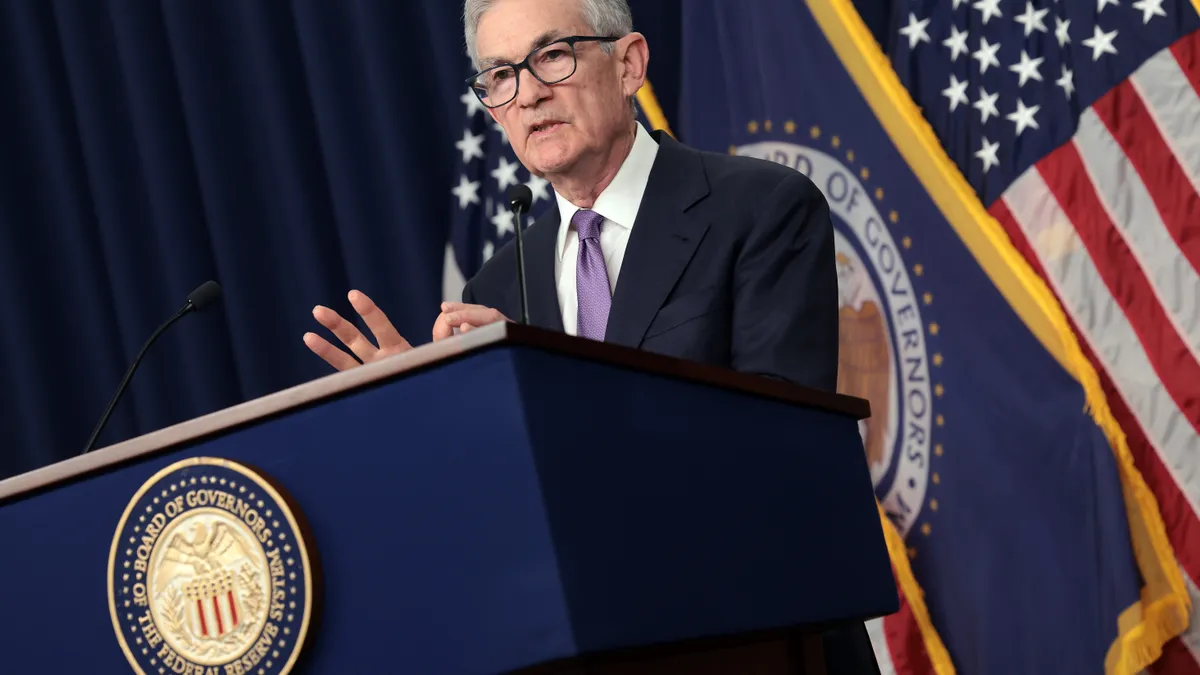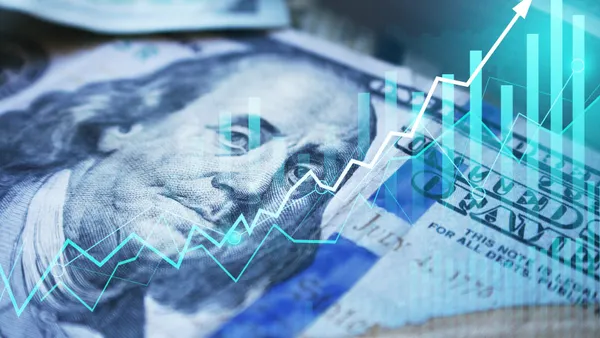Dive Brief:
-
The Federal Reserve held the main interest rate steady Wednesday and said that it needs more confidence that price pressures are consistently falling before it trims borrowing costs from a 23-year high in response to a benign mix of cooling inflation and steady economic growth.
-
Policymakers have signaled for weeks that they need to see a sustained decline in price pressures before softening their most aggressive fight against inflation in 40 years.
-
The policy-setting Federal Open Market Committee “does not expect it will be appropriate to reduce the target range [of the federal funds rate] until it has gained greater confidence that inflation is moving sustainably toward 2%,” the committee said in a statement after a two-day meeting. At the same time, policymakers deleted a reference to “additional policy firming,” which was in their prior statement in December.
Dive Insight:
The central bank held the federal funds rate at a range between 5.25% and 5.5% even after their preferred measure of inflation — the core personal consumption expenditures price index excluding volatile food and energy prices — fell to 2.9% in December from 3.7% in August. Policymakers aim to curb inflation to their 2% target.
The FOMC “judges that the risks to achieving its employment and inflation goals are moving in better balance,” the committee said, referring to its dual mandate to ensure maximum employment and price stability.
At the same time, the Fed will probably not cut the benchmark interest rate at its next policy meeting on March 19-20, Fed Chair Jerome Powell predicted at a press conference after release of the FOMC statement. “That’s probably not the most likely case, or what we would call the base case,” he said.
Traders in interest rate futures heeded Powell’s forecast, trimming the odds of a quarter-point cut to the federal funds rate at the March meeting to 36% from 40% on Tuesday.
In an encouraging sign for the Fed’s inflation fighters, price pressures from wages are falling despite solid hiring and an unusually low jobless rate. The employment cost index during the fourth quarter rose just 0.9%, less than expected in the smallest increase since 2019, the Labor Department reported Wednesday.
“We expect inflationary pressures will continue to cool,” Ginger Chambless, head of research for commercial banking at JPMorgan Chase, said Monday in a client note.
While acknowledging a decline in goods prices, Powell said he would gain more confidence that inflation is falling on a sustainable path if the increase in services prices begins to steadily slow. “The services sectors would have to contribute more” to disinflation, he said.
The Fed has likely raised borrowing costs to the peak level during the current rate cycle, Powell said, while highlighting the central bank’s challenge in “risk management.”
“We know that reducing policy restraint too soon or too much could result in a reversal of the progress we've seen on inflation and ultimately require an even tighter policy to get inflation back to 2%,” he said. “At the same time, reducing policy restraint too late or too little, could unduly weaken economic activity and employment.”
Even amid high borrowing costs, consumer spending persists at a healthy rate. Consumer confidence in January hit the highest level since December 2021, the Conference Board said Tuesday.
Also, economic growth has slowed but stayed robust, defying predictions of recession. Gross domestic product rose at an annual rate of 3.3% during the fourth quarter after expanding 4.9% during Q3.
“We do expect growth to moderate,” Powell said, “as supply chain and labor market normalization runs its course.”
“Of course, we have expected it for some time and it hasn’t happened,” Powell said.
Since their prior meeting in December, Fed officials have said they see little reason to cut the benchmark interest rate — and risk a resurgence of inflation — so long as economic growth is steady and the labor market is healthy.














